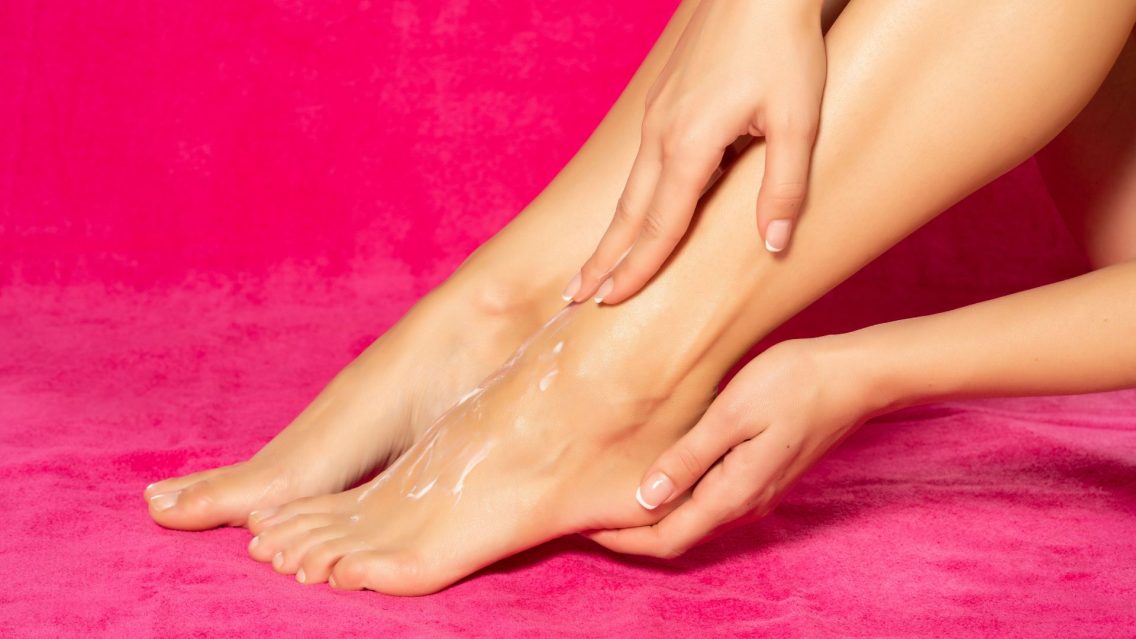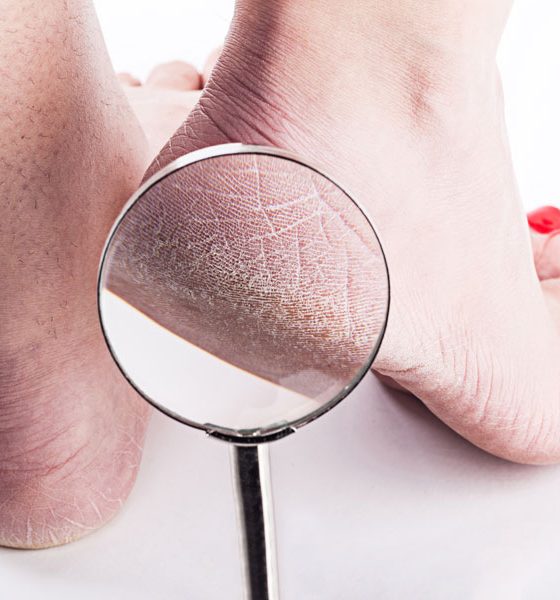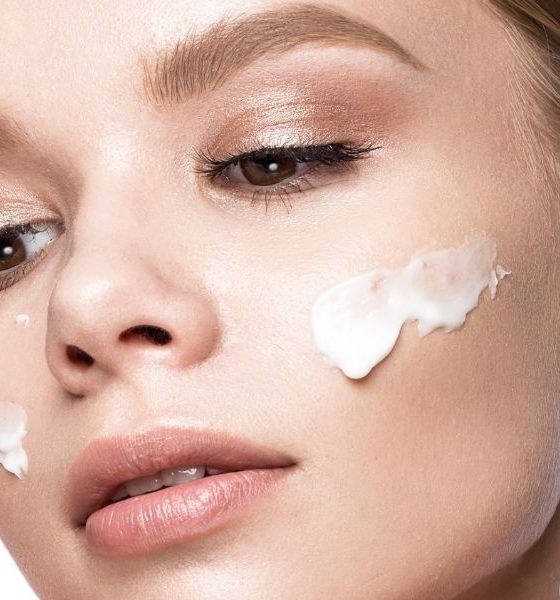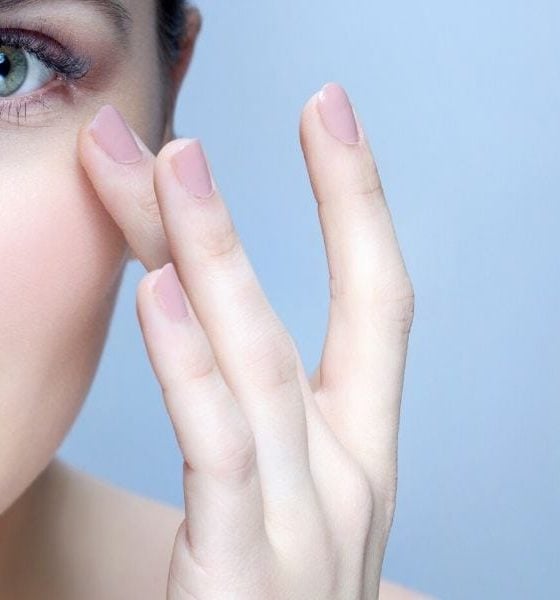Cracked Heels No More: Best Lotions for Calluses on Feet

You don't need to indulge in a professional pedicure to get rid of those pesky calluses. But it might take a heavy-duty lotion or cream to undo the damage your feet have endured.
For the softest, smoothest tootsies, here are the best lotions for calluses on feet.
JUMP TO:
What are the Best Lotions for Calluses on Feet?
While many people use creams and lotions to moisturize the skin, some only do so when there is discomfort and cracking from the dry skin. Others buy what’s on sale without concern as to if it is the right solution for them.
As a skincare lover, I am exposed to many different creams and lotions.
The following are my recommendation for over-the-counter creams and lotions.
Lotions
Lotions are not the first choice for callus care. Lotions are a thinner vehicle for moisture and do not penetrate the skin as deeply.
A lotion is a good selection for mild dryness on the top of the foot, around the ankles and on the legs. It is not suitable for the thicker skin on the bottom of the foot and especially the heels. Using a lotion does certainly have an appropriate place in foot health.
While there are many lotions available in the grocery stores, physician's offices, and pharmacies, the only lotion I recommend is Amerigel Care Lotion.
Available online and in many pharmacies, this lotion has properties that no others have. It contains Oakin, a natural ingredient that exfoliates dry skin, fights bacterial and fungal infections, and reduces skin inflammation. It is one of the few lotions that can eliminate the pigmentation that many find on their legs.
There is one lotion that the clinic recommends, however: Amerigel Care Lotion. It contains zinc oxide, dimethicone and a trademark ingredient called Oakin that relies on natural tannins to fight infections, exfoliate and reduce inflammation.
Creams
Creams are thicker than lotions and stay put where you place them, making them more desirable for foot care than lotions.
Lesley Thomas of “The Telegraph” prefers Kiehl's Intensive Treatment, loaded with avocado and shea butter; she also gave a shout-out to Aveda's sweet-smelling Foor Relief cream. “InStyle” magazine's Best of Beauty 2 selected Neutrogena's Norwegian Formula Foot Cream.
Unlike lotions, there are several creams that I recommend. Each serves a particular purpose. For maintenance, when there is not a particular issue with dryness and the skin of the feet is generally healthy, both Eucerin cream and Cetaphil cream can be used with excellent results. Both are widely available in pharmacies and grocery stores.
Prescription Remedies
Some of the best callus care creams are available only by prescription from your podiatrist. Most will contain a high percentage of urea or uric acid, a heavy-duty exfoliant that can soften and help heal even the toughest, fissured feet.
There is many times where feet become dry and rough when an “off the shelf” solution doesn’t work well enough. The first line of defense is a stronger moisturizing cream. Foot Miracle, by Straight Arrow, is a cream that absorbs well into the skin to treat dry and rough areas of the skin. Using it twice a day will condition the skin and keep it from drying and cracking.
There are some who still need another level of hydration. For those I recommend Gormel Crème, by Gordon Labs. Gormel Crème contains 20% Urea, which adds elasticity to the skin to make it supple by drawing upon the body’s own moisture. It also helps to prevent and treat painful cracking and splitting skin.
Home Remedies
A tried-and-true home remedy is to slather your feet with your chosen lotion or cream just before bedtime, then put on a pair of clean cotton socks. You can use a specialty product with this beauty routine, but it turns out you can also use simple petroleum jelly. Bag Balm is another popular overnight remedy.
Most of the time, any old moisturizer won’t do. It is important to identify your skin type, what you expect from the cream or lotion, and what the best one is for your particular situation.
Will Lotions Help Calluses on Feet?
Yes, applying moisturizing lotion or cream can help soften calluses on feet. Look for a moisturizing lotion or cream with salicylic acid, ammonium lactate, or urea, as these ingredients can help gradually soften hard calluses.
However, it's important to note that moisturizing alone may not be enough to completely remove calluses. Other treatments such as medicated peels or using a pumice stone may also be necessary.
Additionally, it's important to address the underlying cause of the calluses, such as wearing shoes that fit properly or using gel pads to prevent excess pressure on the skin.
If You Have Calluses On Your Feet, Do you Need a Podiatry Chair?
Or special equipment to remove the calluses?
If you have calluses on your feet, you do not necessarily need a podiatry chair or special equipment to remove them.
However, it is recommended to see a professional pedicurist or podiatrist for the best results and to prevent discomfort or injury. If you choose to remove calluses at home, it is important to prioritize safety, especially if you have poor circulation or diabetes.
Here are some options for removing calluses:
- Foot files: Gentle foot files can be used to slough off layers of dead skin over time, but it is important to avoid over-filing and breaking healthy skin
- Chemical treatments: Some creams and gels contain active ingredients like urea to gently remove calluses over time
- Electric foot sanders and callus removers: These tools can be used at home, but it is important to choose high-quality, safe products and to follow instructions carefully
- Professional treatment: Podiatrists and pedicurists can use specialized tools like diamond podiatry burs and scalpels to safely remove calluses.
What Dissolves Calluses on Feet?
There are several ways to dissolve calluses on feet, including chemical and manual removal methods.
Chemical callus removers use active ingredients such as salicylic acid, urea, or lactic acid to dissolve the dead skin or soften the calloused area. These products come in the form of gels, masks, peels, creams, or liquids, and they gradually break down the hard skin over time.
Manual removal methods involve using tools such as foot files, pumice stones, or electric callus removers to physically buff away the layer of rough skin
Here are some common active ingredients found in callus removers:
- Salicylic acid: a keratolytic agent that dissolves the protein (keratin) in the dead skin cells
- Urea: a natural moisturizing agent that softens the skin and helps break down the callus
- Lactic acid: an alpha-hydroxy acid that exfoliates the skin and helps remove dead skin cells
- Potassium hydroxide: a strong base that dissolves the dead skin cells
- Glycolic acid: an alpha-hydroxy acid that exfoliates the skin and helps remove dead skin cells
It is important to note that calluses cannot be permanently cured, but consistent upkeep and prevention can help manage them.
If the calluses are severe or painful, it's best to consult a healthcare professional for treatment options.







